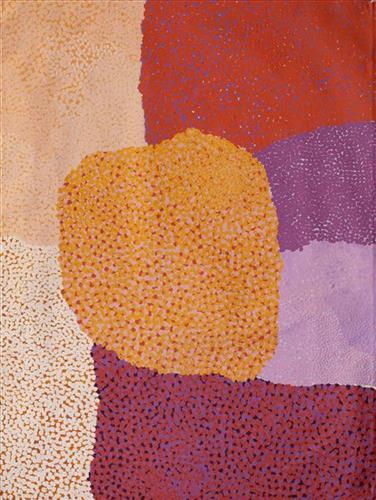111581931932
Kulyakartu Wilyamitimiti
“Wilyamitimiti, man eater, only self. He been walk around Kulyakartu area. Marlkarri (dead) kukurrpa (kind of devil), he been have a plenty people in dreaming time, cook him up, eat him eat plenty in the night time. He been living in a cave. Lightning from Kaljali (Jaramarra spring), my jila (ancestral snake) from another place, jila place. From yapu (hill) that lightning been shut him up. [He] tried to get up, nothing. Rain been come.”
– Wokka Taylor
The term jukurrpa is often translated in English as the ‘dreaming’, or ‘dreamtime’. It refers generally to the period in which the world was created by ancestral beings, who assumed both human and nonhuman forms. This painting depicts a Warnman jukurrpa (dreaming) story of Wilyamitimiti, a sole man eating devil living in the Kulyakartu area who would hunt for his victims at night. Eventually Wilyamitimiti was forever entombed in a cave by rocks falling during a lightning storm sent by the ancestral snake, Kaljali, from the north of Martu country.




